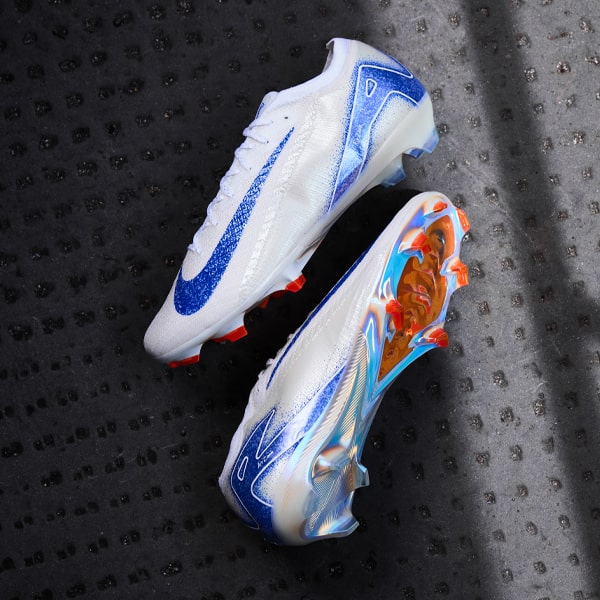Nike's Concorde Moment - Mercurial Vapor Superfly III

A Concorde Moment refers to a point "where great leaps are made in science or engineering and are then never used or retired because they are not business effective". We present the case of the Nike Vapor Superfly III, which in 2011 delivered Nike Flywire technology, Nike Sense traction and a price tag of £280.00.
Never before has a mainstream football boot cost so much, and you wonder if ever again a boot will cost £280.00. The namesake 'Concorde' may be the most famous example, but the Superfly III along with the supersonic aircraft is joined by such costly engineering feats as the Bugatti Veyron, Jaguar XJ220 and SR-71 Blackbird Spy Plane.
The Nike Mercurial Vapor Superfly II and III football boots (shown here is the Volt Superfly III) are the embodiment of a period of boot design we may never see again. The development, innovation and engineering packed into one boot was unprecedented, and in an age of economic stability, lightweight minimal design and re-usable materials, we look back on the Superfly as a timeless design.

The story of the Superfly III began in 2002, when Flywire technology's creator Jay Meschter, Innovation Director of Nike s Innovation Kitchen, had a shoe last with pins and string placed only at key points where the foot requires support. The model looked like 1970s string art but held an uncharted realm of possibility. This single product concept held the potential to revolutionize the way footwear is constructed.
Creating a skeleton or cradle with engineered fibers strategically placed to hold the foot in place overturns the very assumptions that go into creating performance footwear - add more to a shoe to get more support, The Innovation Kitchen knew the possibilities the product held, but there was no easy or cost effective way to deliver the innovation into product. The project went into hibernation until Jay and his team could find the machinery and processes capable of delivering the technology to product.


A couple of years later in Nike s sample room Jay found the answer right before his eyes in a simple embroidery machine. Embroidery was the way to engineer Flywire technology, and so the birth of Nike Flywire technology revolutionized the Mercurial Vapor range. By utilizing high-strength threads to act like cables on a suspension bridge, engineered support was delivered precisely where needed. This revolutionary technology transformed how footwear is engineered by reducing the amount of material required for the upper of a shoe to the bare minimum, without compromising on durability or integrity and support.
 |
 |
But the innovation of the Vapor Superfly II and III didn't end with the upper adapting to the motion of the foot - the outsole was the most radical ever seen on a football boot. The Mercurial Vapor Superfly incorporated a revolutionary new 7-layer carbon composite outsole to shave precious grams from the boot, whilst the Nike Sense adaptive traction technology was designed to ensure the player remained quicker than ever without compromising integrity or traction.


In developing Nike Sense adaptive traction technology, designers created an adaptive stud that could extend and retract by up to 3mm, based on ground conditions and pressure exerted by the player. Directionally positioned blades maximized cutting allowing for quick changes of direction, while secondary toe traction provided added toe-off power for those first critical steps. The result was a boot engineered to enable greater speed in all directions.

The Nike Mercurial Vapor Superfly III we see here is a testament to a chapter in Nike's history, and the history of football boot design. There have been many innovations which have shaken the boot industry, but the Superfly III stands as a unique and costly package - a Concorde Moment - which is unlikely to ever be revisited or resurrected. The boot remains in circulation and most probably still divides opinions, but with a price tag of £280.00, Nike Sense and Nike Flywire technology, the Superfly III must surely be acknowledged as a modern day icon.







